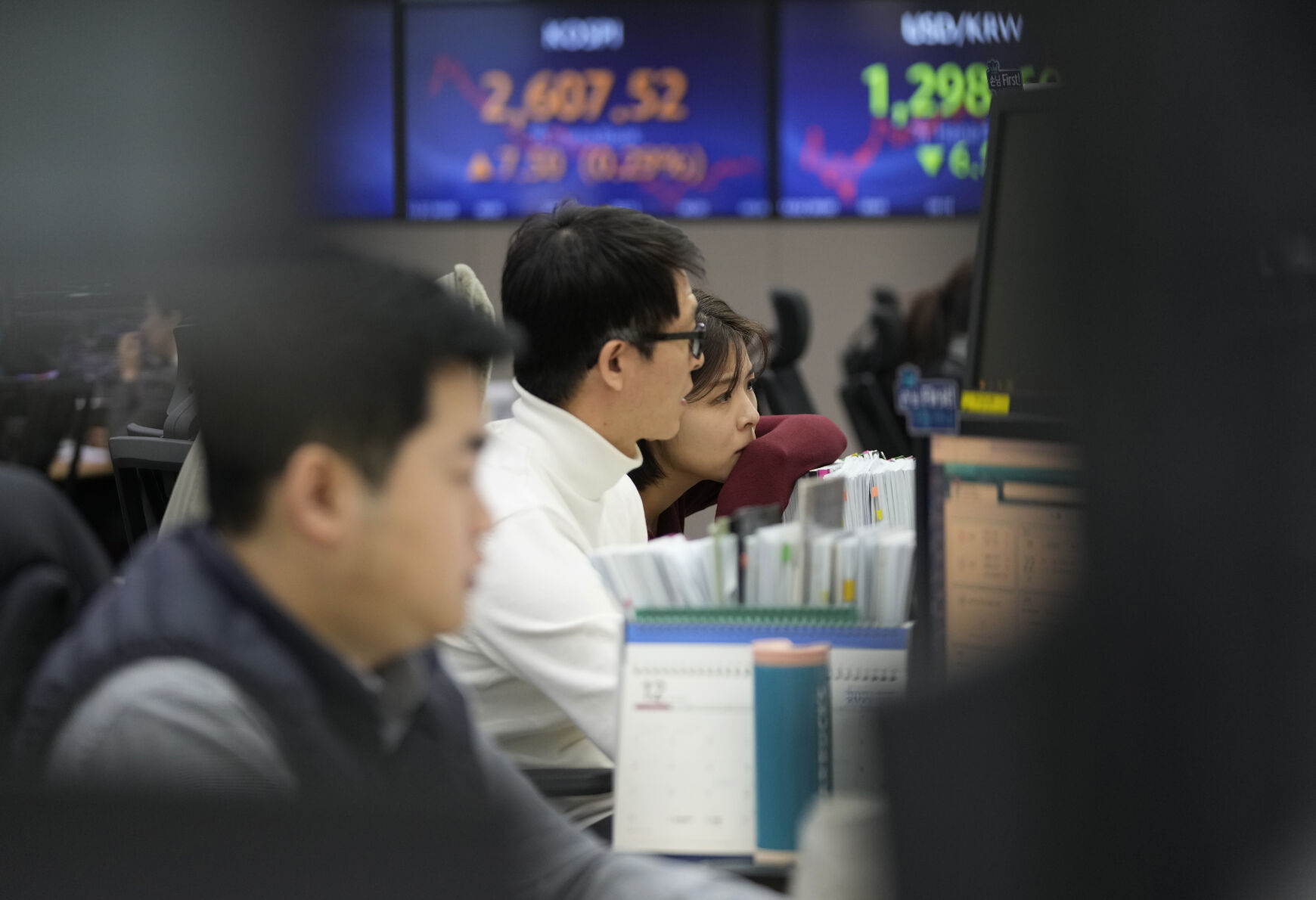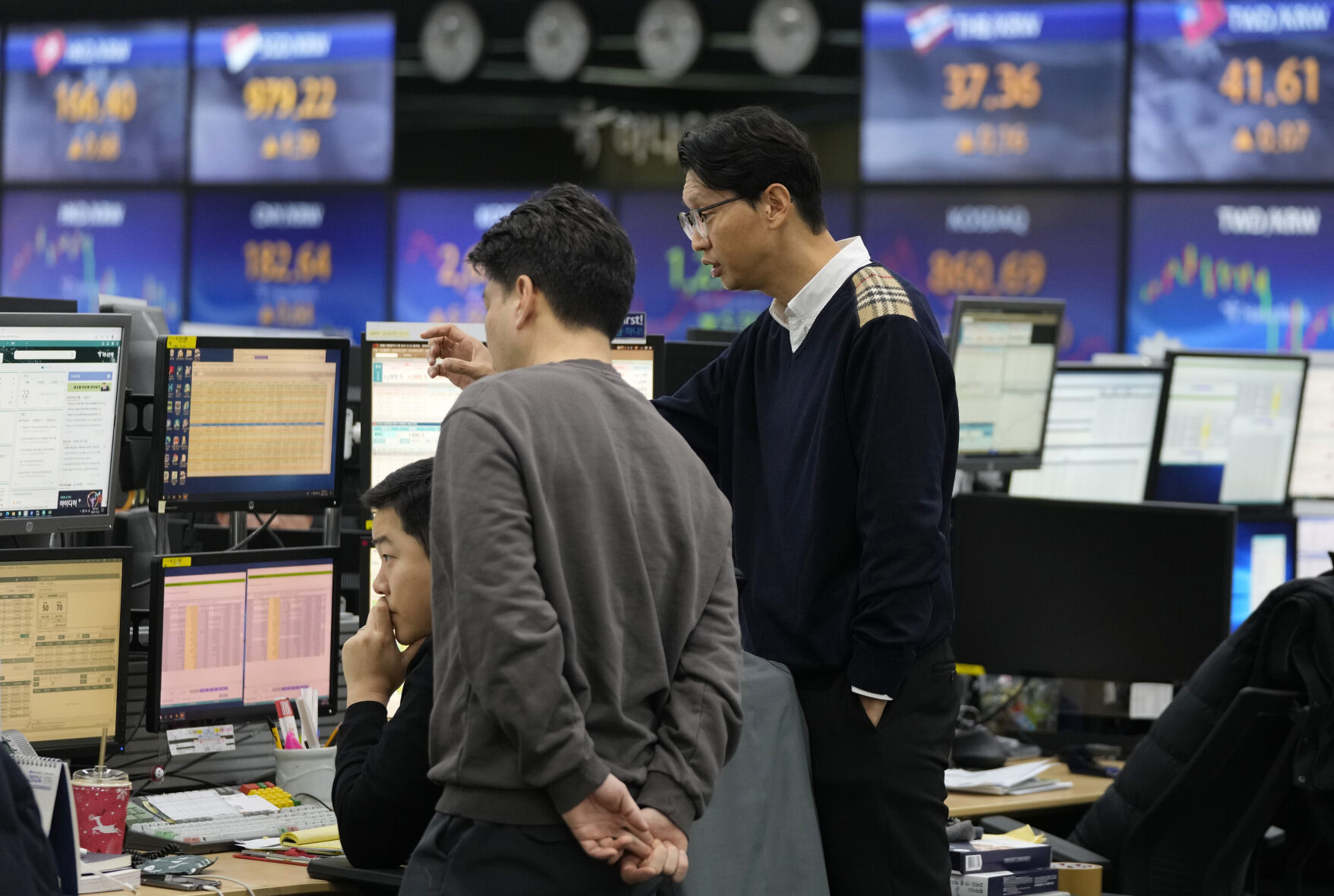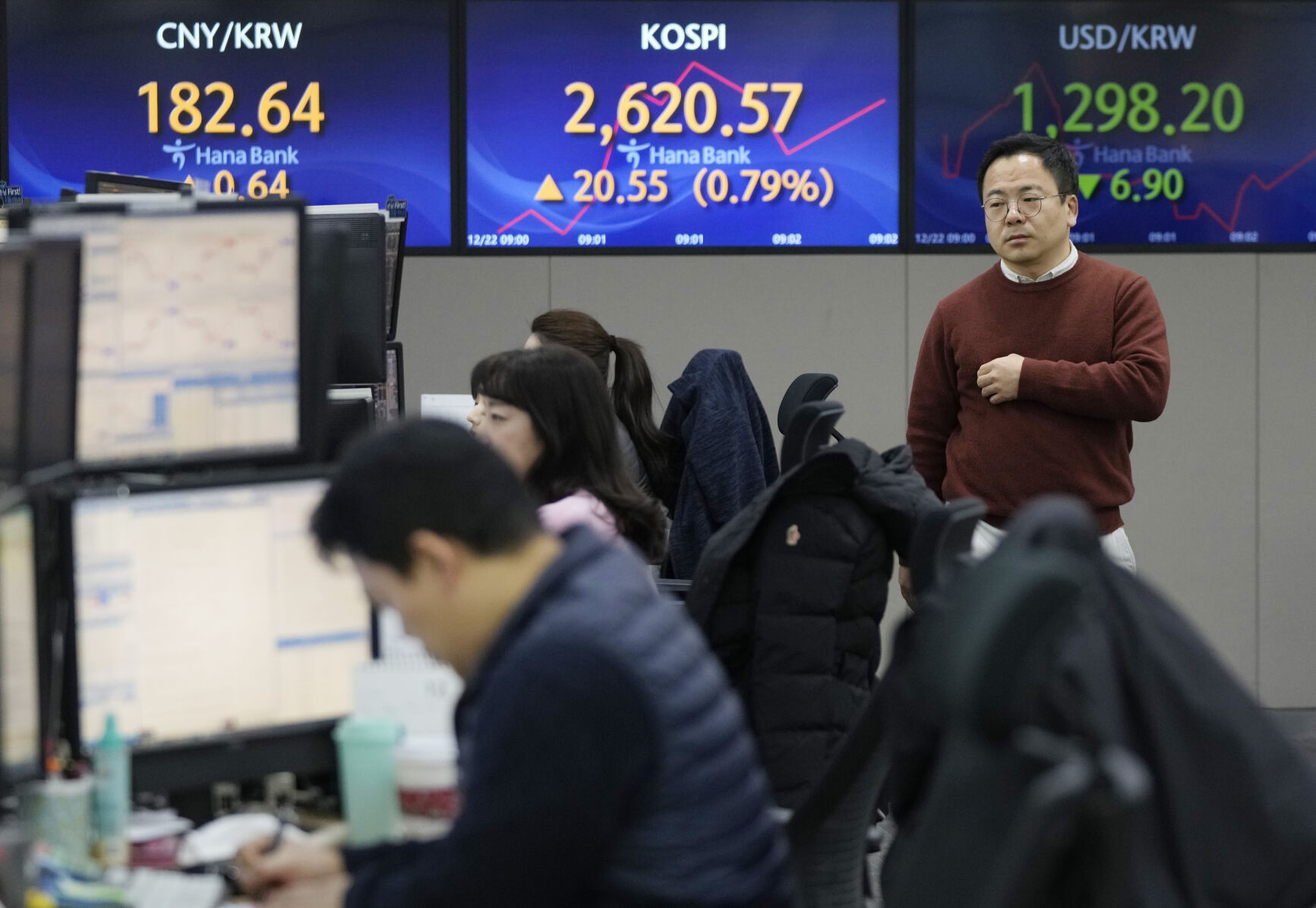NEW YORK (AP) — Wall Street drifted toward record heights Friday following reports showing inflation on the way down and the economy potentially on the way up.
The S&P 500 rose 0.4% in early trading, just 0.7% below its record set nearly two years ago. The Dow Jones Industrial Average rose 75 points, or 0.2%, as of 9:40 a.m. Eastern time, and the Nasdaq composite inched 0.3% higher.
Nike slumped 10.7% for one of the market’s sharpest losses after it cut its forecast for revenue this fiscal year. It cited weakness in China, the downsides for exporters of a stronger U.S. dollar and other challenges. Karuna Therapeutics, meanwhile, leaped 47% after the biopharmaceutical company agreed to sell itself to Bristol Myers Squibb in a cash deal valued at a total of $14 billion.
But Wall Street’s focus was squarely on a suite of economic reports released Friday, which led to some gyrations in Treasury yields.
Falling yields have been a primary reason the stock market has charged roughly 15% higher since late October. Not only do they boost the economy by encouraging borrowing, they also they relax the pressure on the financial system and goose prices for investments. They’ve been largely dropping on hopes that inflation has cooled enough for the Federal Reserve to cut interest rates in 2024.
New data Friday showed the measure of inflation the Federal Reserve prefers to use slowed by more than economists expected, down to 2.6% in November from 2.9% a month earlier. It echoed other inflation reports for November released earlier in the month.
The latest numbers also showed that spending by U.S. consumers unexpectedly rose during the month. While that’s a good sign for growth for an economy driven mainly by consumer spending, it could also indicate underlying pressure remains on inflation. A separate report showed that orders for long-lasting manufactured goods strengthened more than expected in November.
The Federal Reserve is walking a tightrope, seeking to slow the economy enough through elevated interest rates to cool inflation, but not so much that it tips the nation into recession. Continued strong spending can complicate its mission at this moment in time.
The yield on the 10-year Treasury climbed from 3.85% just before the reports’ release to nearly 3.90% in the minutes immediately afterward. It then sank back to 3.86%, which was down from its 3.89% level late Thursday.
In October, the 10-year yield was above 5% and putting painful downward pressure on the stock market.
“People are tightening their belts, but they’re not suffocating their spending,” said Brian Jacobsen, chief economist at Annex Wealth Management. “Inflation has moderated significantly and the run-rate for inflation is now at the Fed’s target, if not lower.”
Traders are still largely betting the Federal Reserve will cut its main interest rate by at least 1.50 percentage points by the end of next year, according to data from CME Group. The federal funds rate is currently sitting within a range of 5.25% to 5.50% at its highest level in more than two decades.
The Federal Reserve released projections last week showing its typical policymaker expects to cut the federal funds rate several times next year, but likely by only half as much as what Wall Street is expecting.
But many see too much optimism over the pace of interest rate cuts early in the year, and that the big run for stocks since late October on anticipation of such support may be overdone.
In stock markets abroad, indexes rose modestly in Europe following a mixed finish in Asia.
Hong Kong’s Hang Seng dropped 1.7% after China released new regulations for online gaming. That sent stocks of Tencent, China’s largest gaming company, and rival NetEase down sharply.
AP Business Writer Elaine Kurtenbach contributed.




